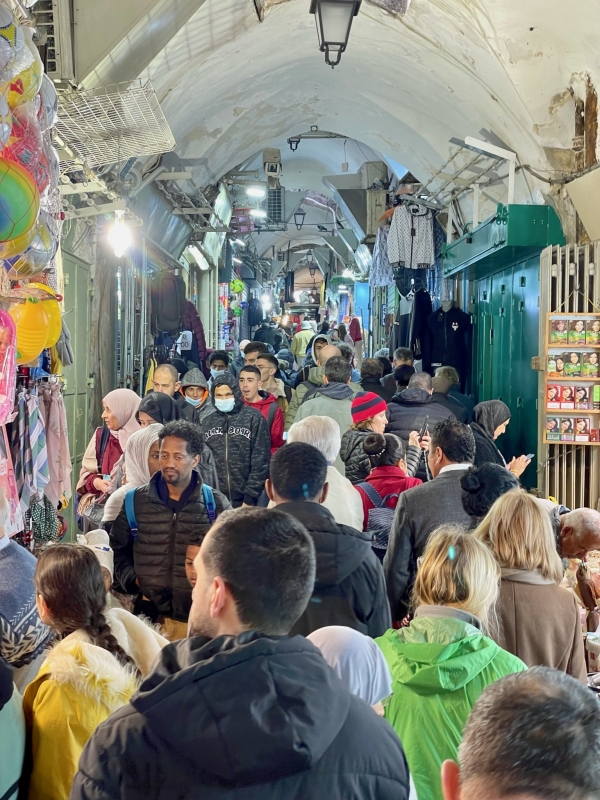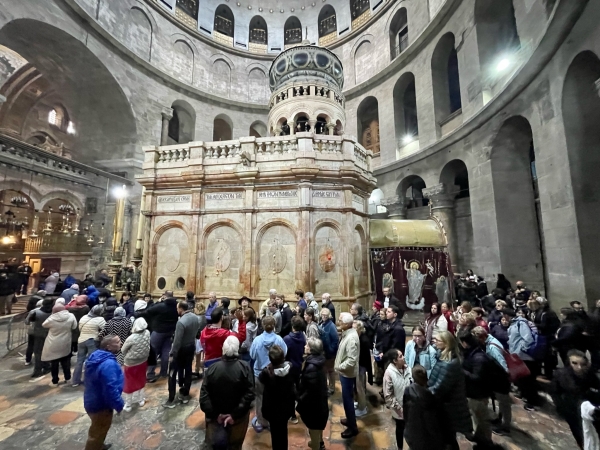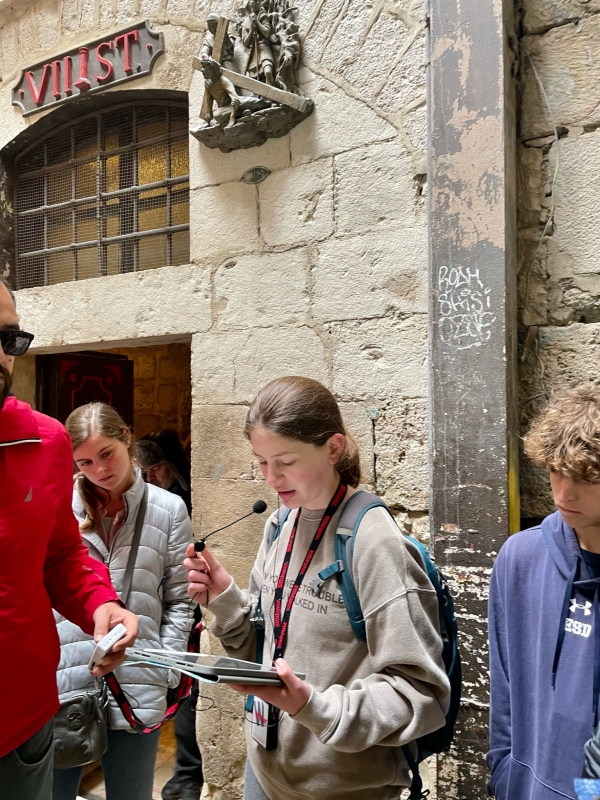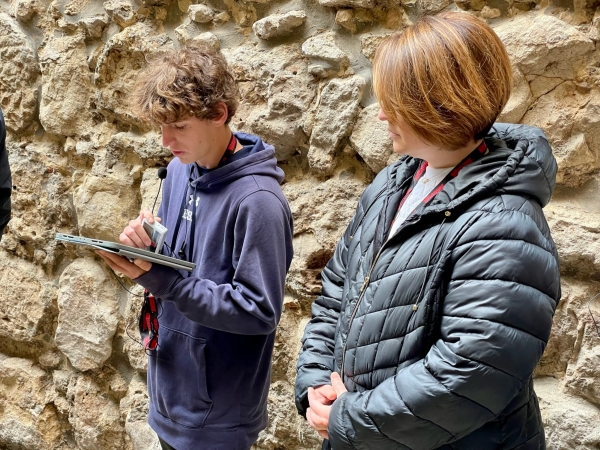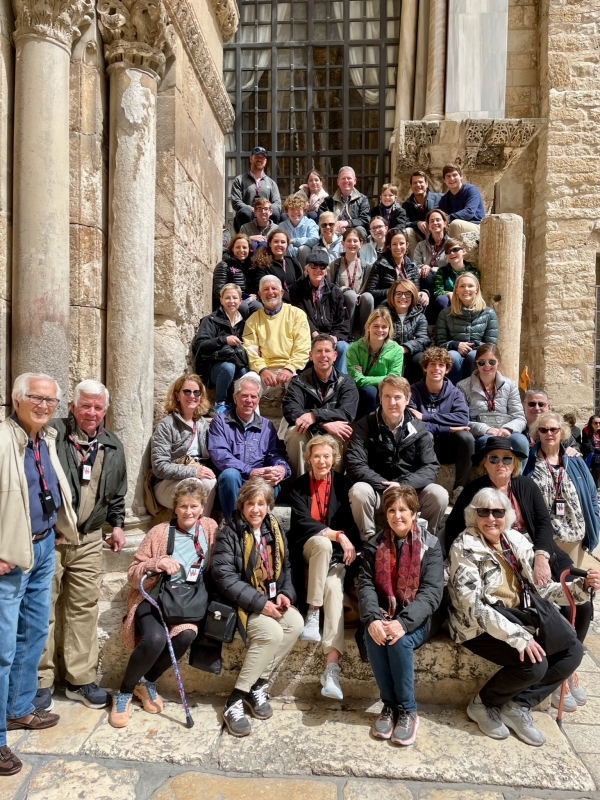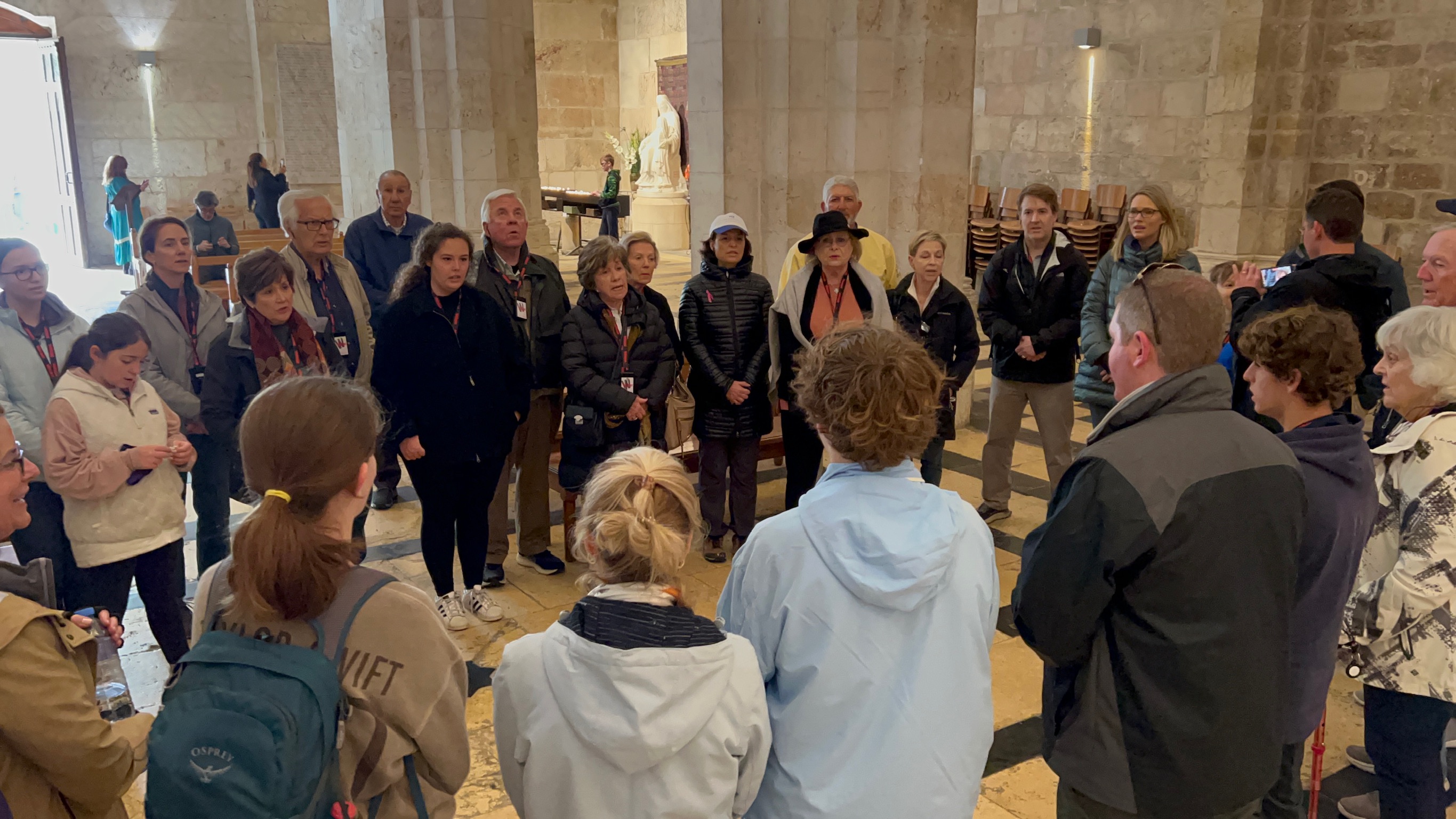
DAY EIGHT
We spent our last full day in Jerusalem walking through the streets of the Old City. The goal today is to walk in Jesus’s footsteps, to see where he performed miracles, where he was put on trial, and where he died and was buried.
Our day began in the Old City of Jerusalem at the Pool of Bethesda. In the first century, this pool was one of the larger cisterns serving the city. The people believed the pool had a special power: It was believed to be a pool that was stirred by angels once a day, and if you were the first person to touch the water after the angels stirred it, you would be healed. Those with illnesses and infirmities would wait around the water for the chance to be healed.
Now in Jerusalem by the Sheep Gate there is a pool, called in Hebrew Beth-zatha, which has five porticoes. In these lay many invalids—blind, lame, and paralyzed. One man was there who had been ill for thirty-eight years. When Jesus saw him lying there and knew that he had been there a long time, he said to him, “Do you want to be made well?” The sick man answered him, “Sir, I have no one to put me into the pool when the water is stirred up; and while I am making my way, someone else steps down ahead of me.” Jesus said to him, “Stand up, take your mat and walk.” At once the man was made well, and he took up his mat and began to walk. (John 5:2-9)
Near the pool is the Church of St. Anne, built to honor Mary’s mother. The church is small and beautiful in a simple way, but it’s also unique. It’s one of only two churches in Israel not damaged or changed by the Islamic empires that ruled the area for centuries. It has remarkably good acoustics and was used a school for years. Today, one of the highlights of a trip to Israel is singing in the middle of the church to hear the vocal resonance. And sing we did!
We walked just a bit down the street to the Church of the Flagellation where Jesus was put on trial before Pontius Pilate. The area once held the palace where Roman Governors lived while in Jerusalem, but today is the site of a church and beautiful courtyard. In that courtyard, we began the Via Dolorosa, the “Way of Sorrows.” The path of the Via Dolorosa traces the way Jesus walked through the city on his way to Golgotha. We prayed the Stations of the Cross as we went, and it was moving to hear the words of each station prayed by our pilgrims, especially our young people. In addition, all the pilgrims helped carry a sodden cross through the crowded streets on our way.
When I first walked the Via Dolorosa in Jerusalem, one of the most powerful observant for me was just how busy the streets are all the time. In my mind, Jesus’s trial and watching him carry the wooden cross through the streets would have been the most important thing happening that day. However, I quickly learned that Jerusalem is always busy and people are moving constantly. Rather than being the focus of the day, I now began to imagine that Jesus was an annoyance to those trying to make their way through the streets. What a humbling experience.
We ended the stations on the roof of the Church of the Holy Sepulchre, a large church built over the historic sites of Jesus’s crucifixion and burial. Today, the Chapel of the Crucifixion and the Tomb of Christ are powerful. Not only are they unexpectedly beautiful, but the overwhelming sense of the sacred permeates the walls themselves. Watching our pilgrims touch the stone upon which Jesus was crucified and seeing them walk into the tomb was incredibly moving. Spending time in prayer where Jesus’s earthly ministry found fulfillment was a wonderful way to officially end our trip.
Following a good lunch, we made our way to the Garden of Gethsemane. The garden is on the west side of the Mt. of Olives, facing the Old City. Gethsemane literally means “olive press,” so it’s no wonder that the hillside is full of beautiful olive trees. Although some are new, there are many trees that have been dated at more than 1,000 years old. These exact trees may not have see Jesus praying in the garden, but they grew from trees that surely did. On the place of Jesus’s prayer before his arrest sits the gorgeous Church of All Nations. Built with the major gifts of twelve nations (including the US), this church represents the unity we find in Christ, no matter where we come from or who we are.
Our last stop of the day is one of my personal favorites: the Church of St. Peter of Gallicantu, meaning “cock crows.” This church is built on the historic site of Caiaphus’s house. Caiaphus was the High Priest who had Jesus arrested in the garden and held as a captive until his Roman trial. The church is built upon the excavated caves that were used by Caiaphus and his household. Most notably is the cistern into which tradition holds that Jesus was lowered and held overnight. The horror of this space is apparent: it’s a deep stone cavern with no windows or door, just a hole in the ceiling. Jesus would have been strung up by his shoulders and lowered into the pit and left hanging the time of his trial before Pilate. Today, we are able to descend modern steps into the pit and say prayers together.
The church above is covered in the most exquisite mosaics depicting the plight of Peter. After Jesus’s arrest, he was taken to Caiaphus’s house and Peter followed at a distance. Afraid for his own life, Peter denied knowing Jesus three times, just as Jesus had predicted, and when the cock crowed, Peter ran away weeping bitterly.
They seized Jesus and led him away, bringing him into the high priest’s house. But Peter was following at a distance. When they had kindled a fire in the middle of the courtyard and sat down together, Peter sat among them. Then a servant-girl, seeing him in the firelight, stared at him and said, “This man also was with him.” But he denied it, saying, “Woman, I do not know him.” A little later someone else, on seeing him, said, “You also are one of them.” But Peter said, “Man, I am not!” Then about an hour later still another kept insisting, “Surely this man also was with him; for he is a Galilean.” But Peter said, “Man, I do not know what you are talking about!” At that moment, while he was still speaking, the cock crowed. The Lord turned and looked at Peter. Then Peter remembered the word of the Lord, how he had said to him, “Before the cock crows today, you will deny me three times.” And he went out and wept bitterly. (Luke 22:54-62)
Today, this church stands for the redemption possible for everyone. Peter, the disciple who knew Jesus personally, who loved him, and upon whom Jesus built the church, denied even knowing him. And yet, even that intimate, fearful denial can be redeemed through Christ’s love. A most appropriate way to end our last official day.
Tomorrow, we have an “extra” day for those pilgrims who were able to stay, so come back for the last post!
Tags: Blog & Newsroom
